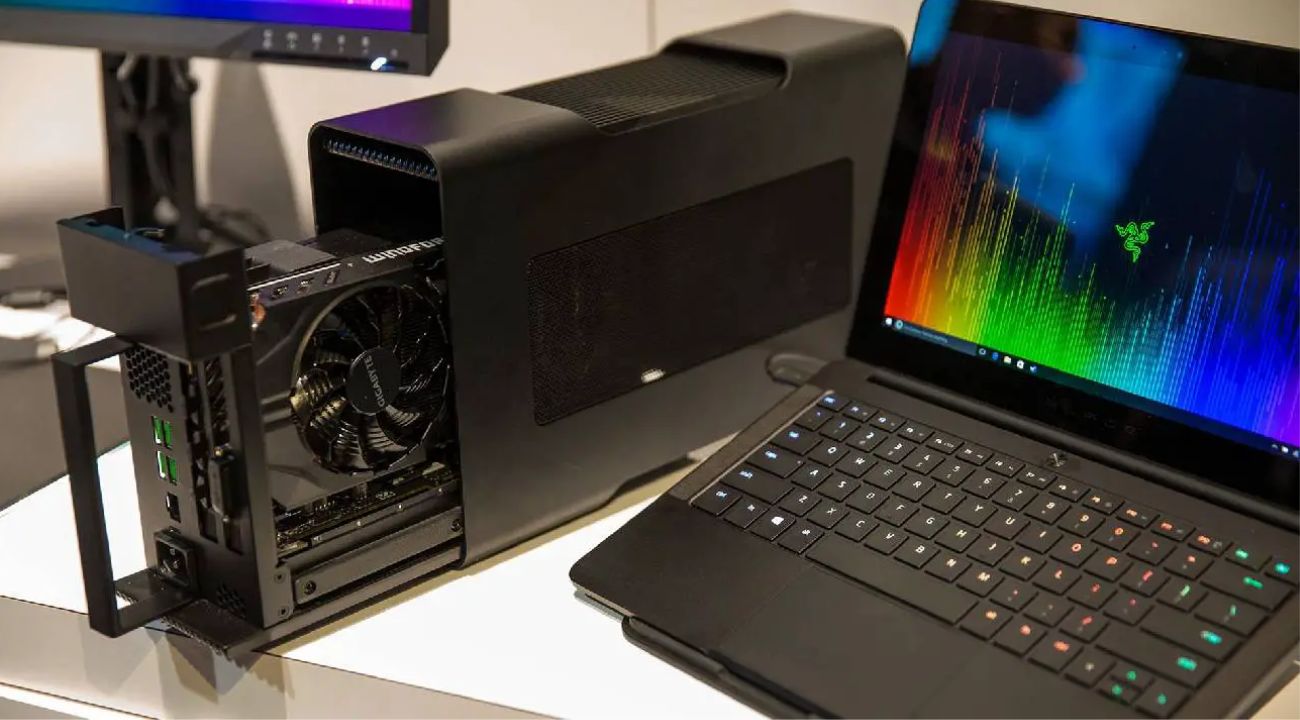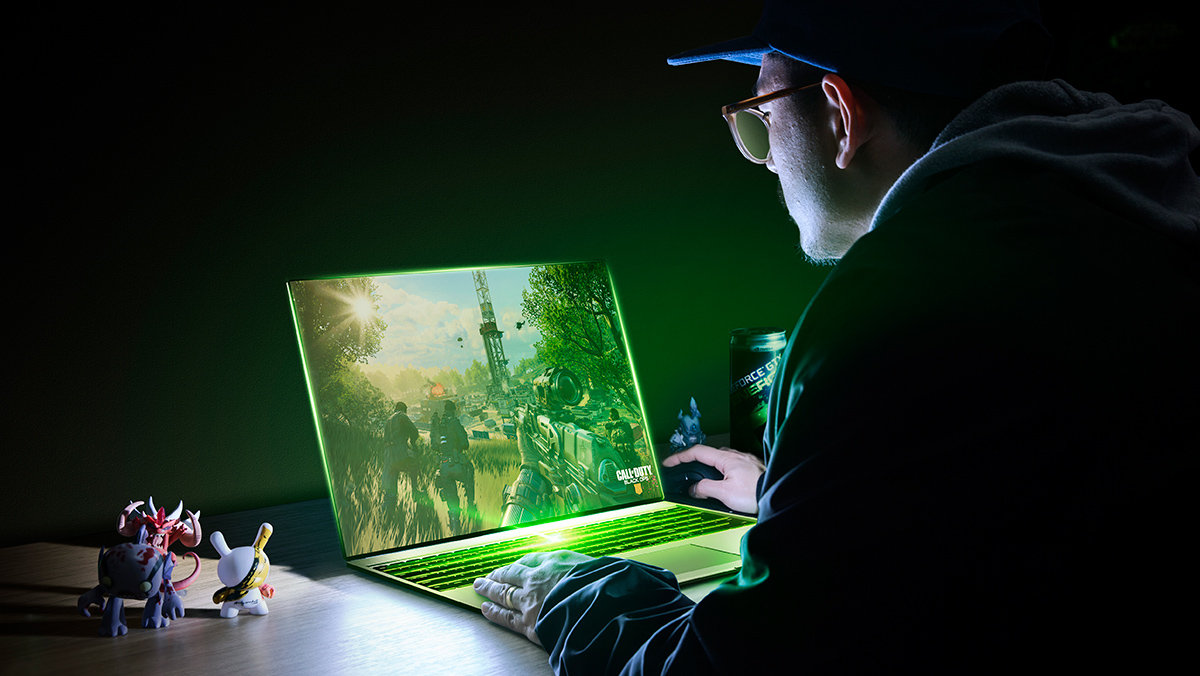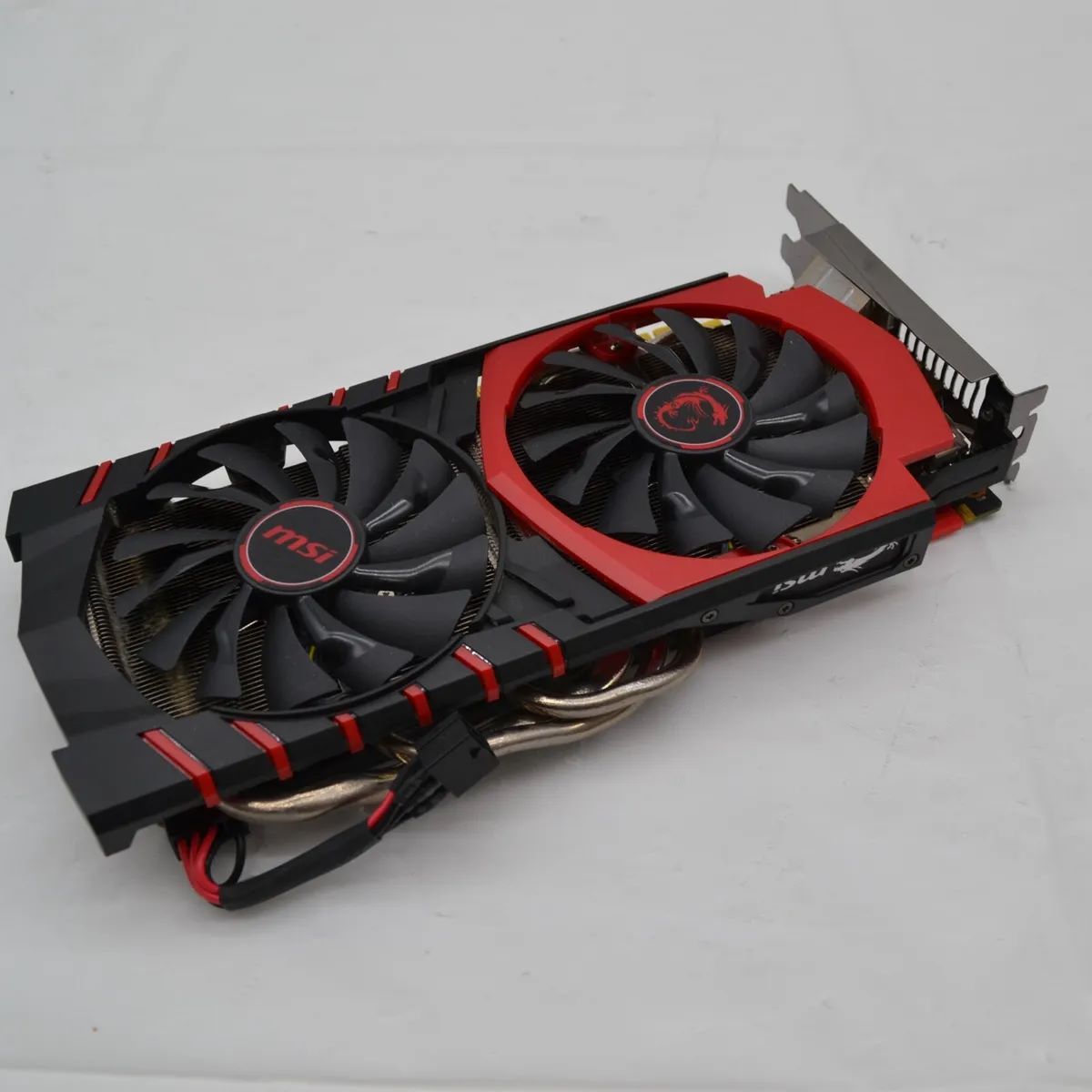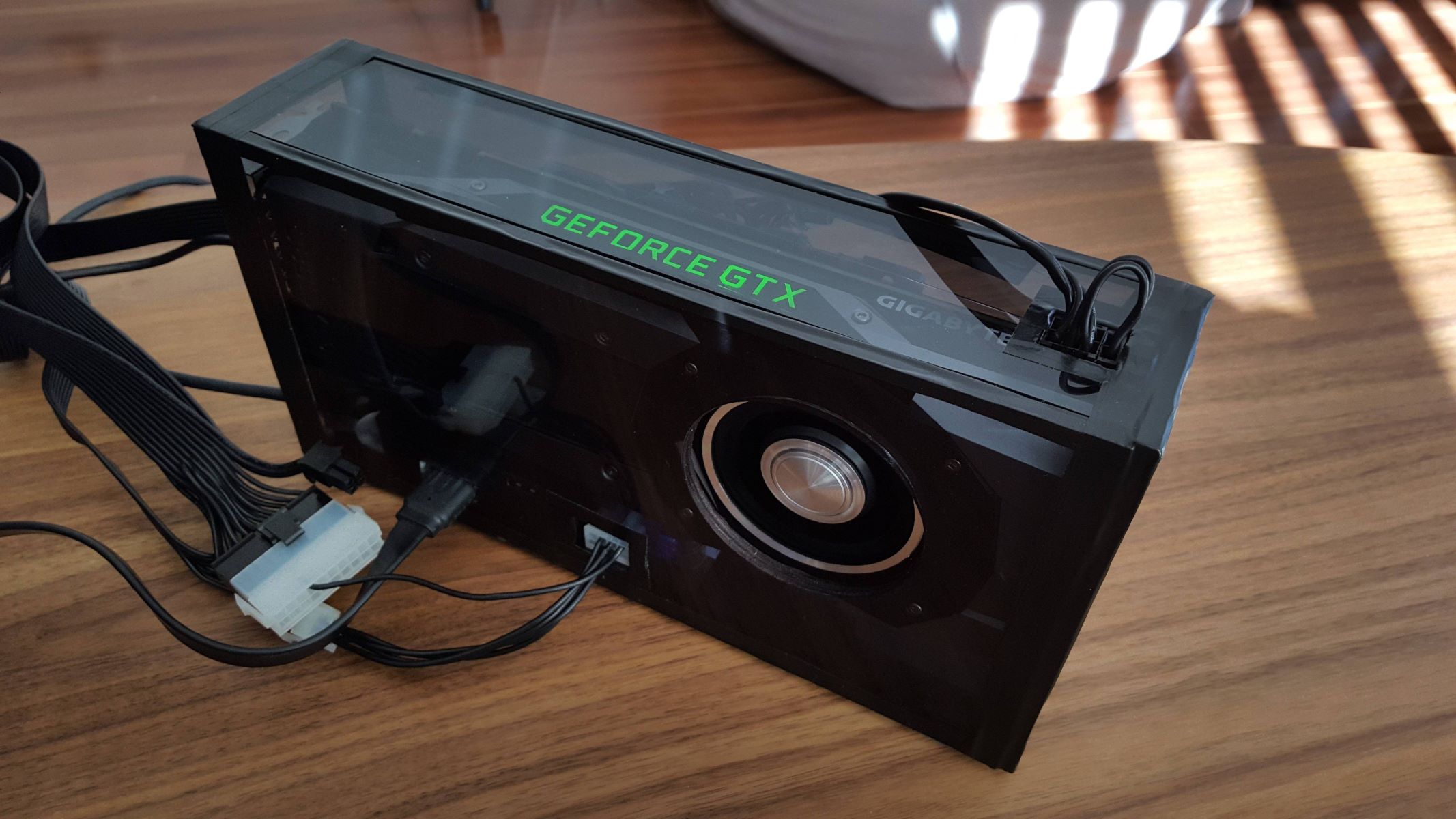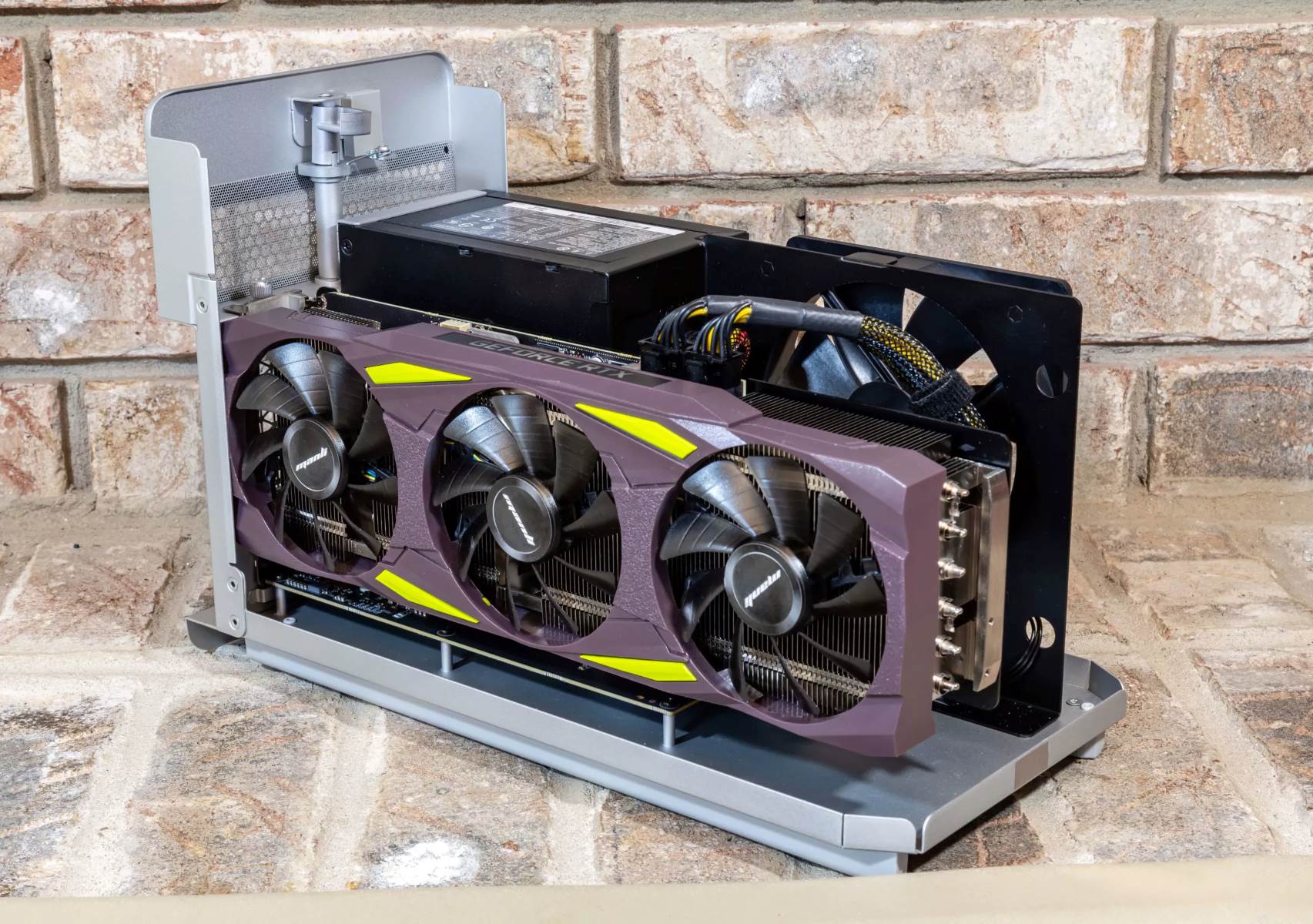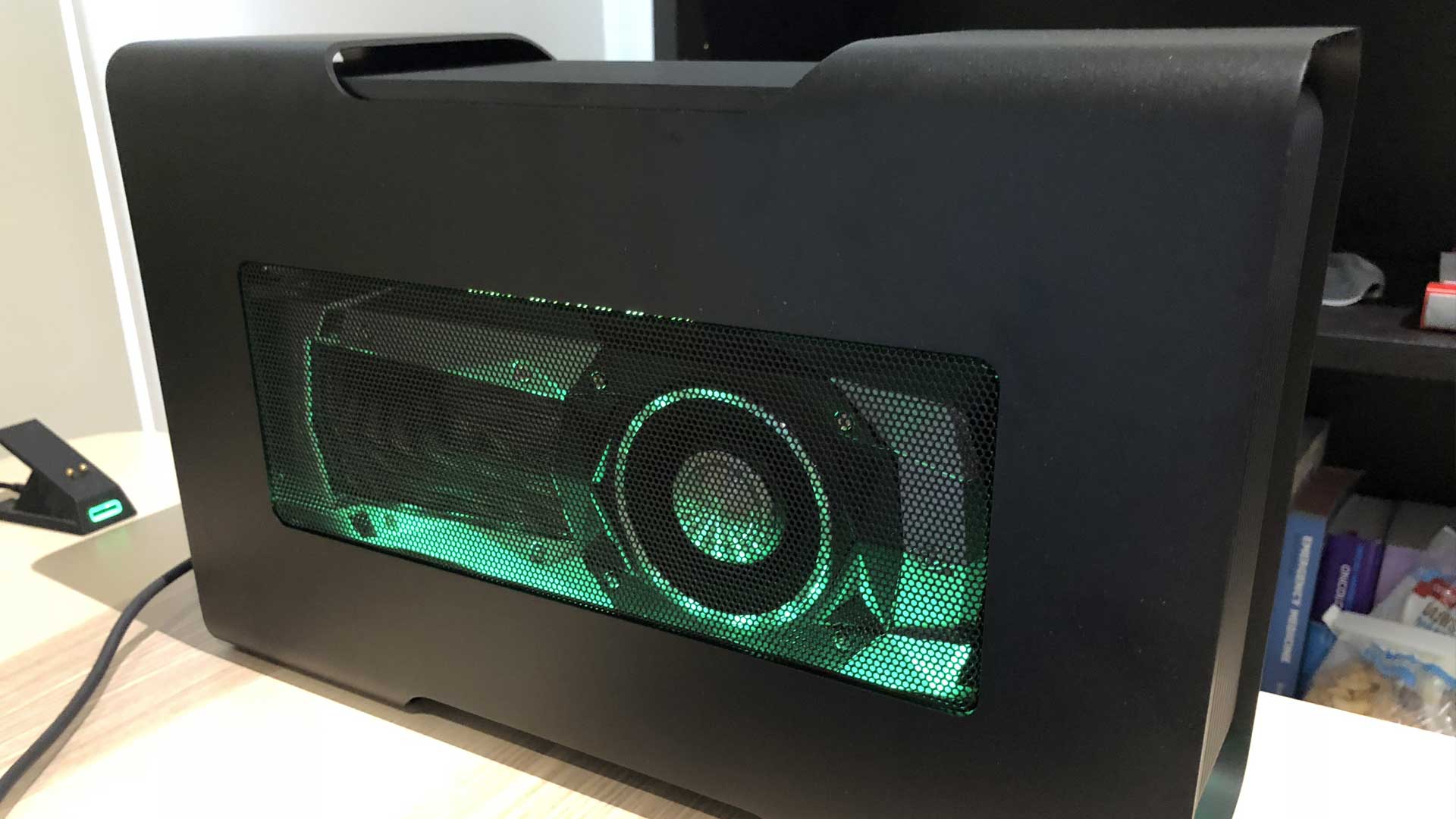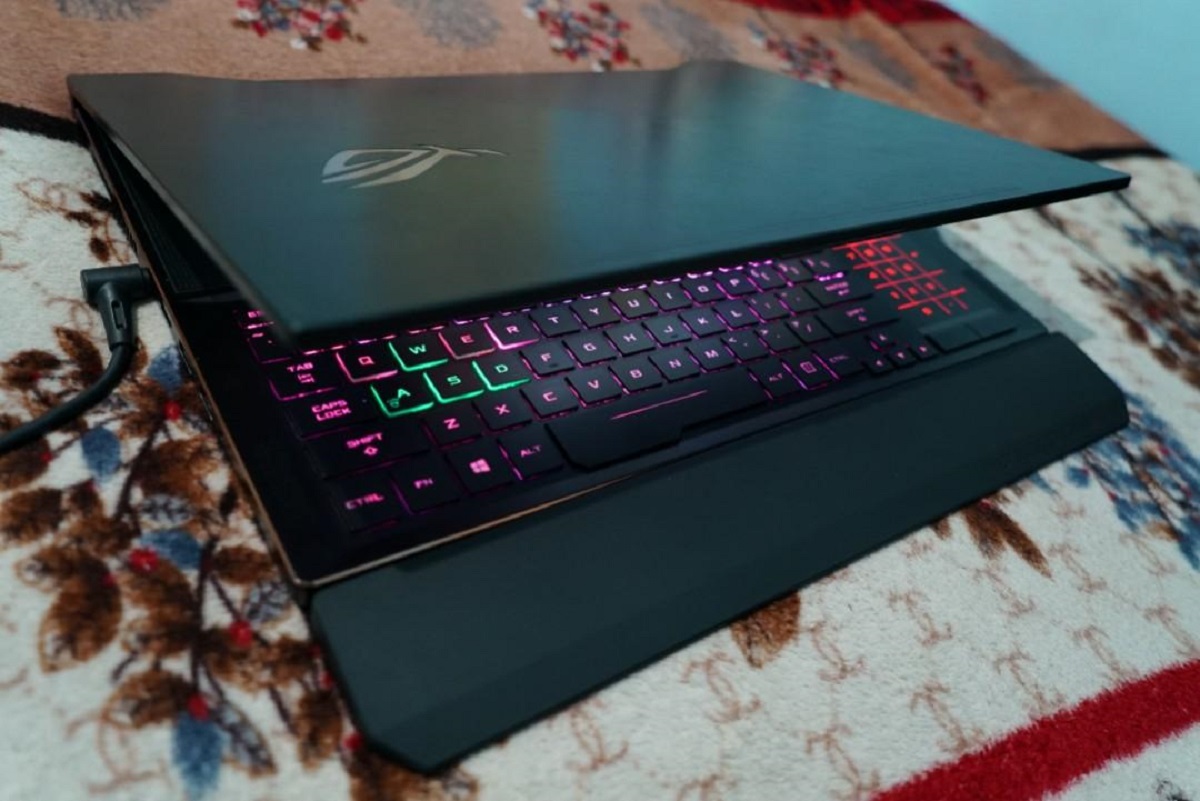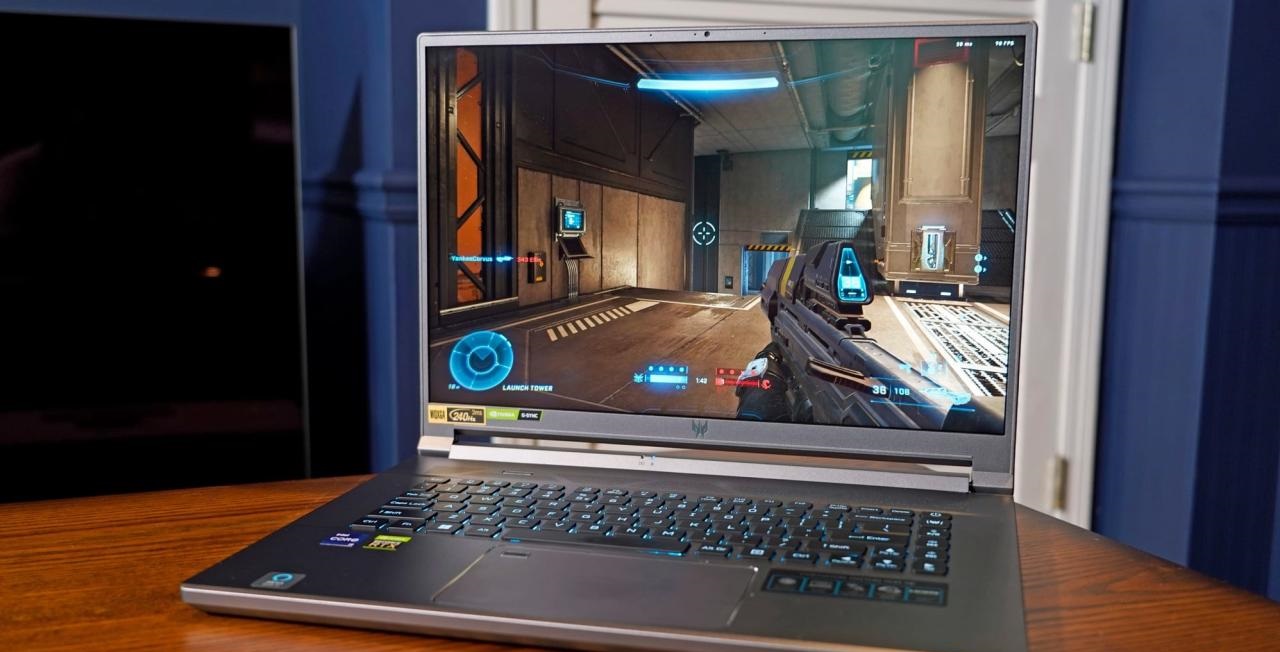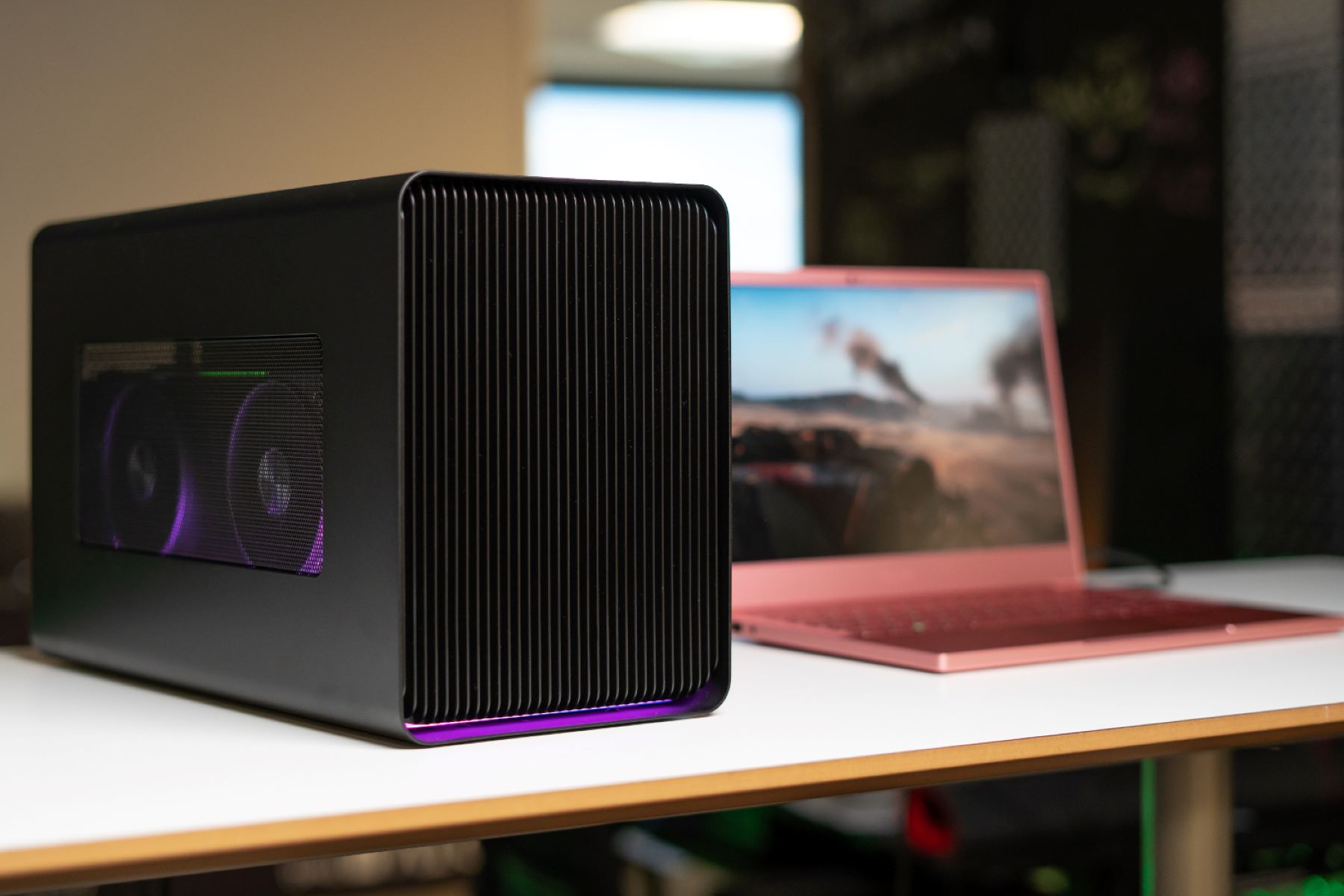Introduction
Are you looking to give your laptop an extra boost in graphics performance? Adding a GPU (Graphics Processing Unit) to your laptop can be a game-changer, allowing you to handle demanding tasks such as gaming, video editing, and 3D rendering with ease. Whether you have a gaming laptop that needs a graphics upgrade or a regular laptop that could benefit from improved graphics capabilities, adding a GPU can take your laptop’s performance to the next level.
So, what exactly is a GPU? A GPU is a specialized processor designed to handle complex mathematical and graphic calculations. Unlike the CPU (Central Processing Unit) that is responsible for general-purpose computing tasks, the GPU is optimized to efficiently process and render images, videos, and animations. With its parallel architecture and vast number of cores, a GPU can significantly accelerate graphical applications and provide a smoother, more immersive experience.
Now, you might be wondering why you would need to add a GPU to your laptop when it already has an integrated graphics card. While integrated graphics are sufficient for everyday tasks like web browsing and document editing, they often struggle to handle graphic-intensive applications. By adding a dedicated GPU, you can enjoy better frame rates, improved graphics quality, and faster rendering times.
Before you rush into adding a GPU to your laptop, there are a few things to consider. First and foremost, you need to check if your laptop is compatible with an external GPU. Not all laptops have the necessary ports and connectivity options to support an external GPU setup. Additionally, you’ll need to ensure that your laptop’s power supply can handle the additional power demands of a dedicated GPU. It’s also important to note that adding a GPU to your laptop may void its warranty, so proceed with caution.
In this step-by-step guide, we’ll walk you through the process of adding a GPU to your laptop, from choosing the right GPU enclosure to installing the drivers and optimizing performance. We’ll also discuss some common issues you may encounter along the way and provide troubleshooting tips to help you overcome them.
So, if you’re ready to unleash the full potential of your laptop’s graphics capabilities, let’s dive into the world of adding a GPU to your laptop!
What is a GPU?
A GPU, or Graphics Processing Unit, is a specialized electronic circuit that is primarily designed to accelerate the creation and rendering of images, videos, and animations. It is responsible for performing complex mathematical calculations required in graphics-intensive applications. While CPUs (Central Processing Units) handle general-purpose computing tasks, GPUs focus on parallel processing and optimizing the performance of visual tasks.
Unlike CPUs, which typically have a small number of cores, GPUs feature a large number of cores. These cores work simultaneously to process large volumes of data, allowing for faster and more efficient graphics processing. The parallel architecture of GPUs enables them to handle multiple data streams simultaneously, making them ideal for tasks such as gaming, video editing, 3D modeling, and scientific simulations.
GPUs are widely used in various industries, including gaming, film and entertainment, design and animation, artificial intelligence, and scientific research. Their ability to handle complex calculations and deliver high-performance graphics has made them indispensable in these fields. In gaming, for example, GPUs play a crucial role in rendering lifelike graphics, enabling immersive gameplay experiences with realistic visuals.
GPUs can be categorized into two main types: integrated and dedicated. Integrated GPUs are built into the motherboard or CPU of a device and are primarily found in laptops and entry-level desktop computers. While they are capable of handling basic graphic tasks, integrated GPUs have limited processing power and are not suitable for demanding applications.
Dedicated GPUs, on the other hand, are separate graphics cards that can be added to a computer system. These powerful standalone GPUs offer significantly higher performance, with more memory, higher core counts, and faster clock speeds. They are typically used in high-end gaming PCs, workstations, and servers that require advanced graphics capabilities and efficient processing of large data sets.
In recent years, there has been a rise in external GPUs, which are standalone graphics cards that can be connected to a laptop or desktop computer via a Thunderbolt or USB-C port. External GPUs provide a convenient way to add powerful graphics capabilities to laptops that lack dedicated graphics cards.
Overall, a GPU is a crucial component for any system that requires high-performance graphics processing. Whether you’re a gaming enthusiast, a creative professional, or a scientist conducting complex simulations, a powerful GPU can greatly enhance your computing experience and unlock the potential of visually demanding applications.
Why would you need to add a GPU to your laptop?
There are several reasons why you might want to consider adding a GPU to your laptop, especially if you engage in tasks that require intensive graphics processing. Let’s explore some of the key reasons:
- Gaming: If you’re an avid gamer, you know how important graphics performance is for an immersive gaming experience. While most laptops come with integrated graphics, they often struggle to run modern games smoothly or at the highest quality settings. By adding a dedicated GPU to your laptop, you can enjoy higher frame rates, better graphics quality, and smoother gameplay.
- Video Editing and Rendering: Professionals who work with video editing, 3D modeling, and rendering require a powerful GPU to handle the complex computations involved in these tasks. Adding a GPU to your laptop can significantly speed up rendering times, allow for real-time editing, and enable smooth playback of high-resolution videos.
- Graphic Design and Animation: Graphic designers, animators, and visual artists rely heavily on GPU performance for creating visually stunning designs and animations. A dedicated GPU can handle the rendering of complex visual effects, handle large image files, and ensure smooth interactions with graphic design software.
- Virtual Reality (VR) and Augmented Reality (AR): Immersive technologies like VR and AR require strong graphics capabilities to deliver realistic and interactive experiences. Adding a powerful GPU to your laptop allows you to explore virtual worlds, engage in VR gaming, and create immersive AR applications.
- Machine Learning and Data Processing: GPUs are increasingly used in data processing, artificial intelligence, and machine learning tasks. These tasks involve analyzing and processing large datasets, and a GPU’s parallel computing architecture can greatly enhance the speed and efficiency of these computations.
By adding a GPU to your laptop, you can transform it into a powerhouse machine capable of handling demanding graphics tasks. It allows you to keep up with the latest technologies and software requirements without the need to invest in an entirely new system.
However, it’s important to note that not all laptops are capable of supporting a dedicated GPU. You’ll need to ensure that your laptop has an available expansion slot or supports an external GPU enclosure. Additionally, some laptops may have limitations in power supply or cooling, which can impact the performance of the added GPU. Researching and understanding your laptop’s compatibility and limitations will help you make an informed decision before investing in a GPU upgrade.
Things to consider before adding a GPU to your laptop
Before diving into the process of adding a GPU to your laptop, there are several important factors to consider. Taking the time to assess these considerations will help ensure a smooth and successful GPU installation. Let’s explore some key considerations:
- Laptop Compatibility: Not all laptops are designed to accommodate an additional GPU. Check your laptop’s specifications to determine if it has an available expansion slot or if it supports an external GPU enclosure. Some high-end gaming laptops may have a dedicated MXM slot for adding a GPU, while others may require a compatible port like Thunderbolt or USB-C for an external GPU setup.
- Power Supply: Adding a dedicated GPU to your laptop will increase its power requirements. Ensure that your laptop’s power supply can handle the additional load. If your laptop has a limited power supply, it may not be able to provide sufficient power to both the system and the GPU, resulting in performance issues or instability.
- Cooling: GPUs generate heat during operation, and it’s crucial to ensure proper cooling to prevent overheating. Check if your laptop has adequate cooling mechanisms, such as fans or heat sinks, to dissipate the increased heat generated by a dedicated GPU. Insufficient cooling can lead to thermal throttling, causing the GPU to slow down and impacting performance.
- Physical Space: Consider the physical dimensions of the GPU and the available space in your laptop’s chassis. Some laptops may have limited space for a graphics card, making it necessary to choose a smaller form-factor GPU or consider an external GPU enclosure for compatibility.
- Supported Operating System: Ensure that the GPU you choose is compatible with your laptop’s operating system. Most modern GPUs are supported on popular operating systems such as Windows, macOS, and Linux. However, it’s always a good idea to verify the compatibility before making a purchase.
- GPU Performance: Research and determine the GPU performance that suits your needs. Consider the specific tasks you’ll be using the GPU for, such as gaming, video editing, or machine learning, and find a GPU that offers the necessary performance and features. Read reviews and benchmarks to get a better understanding of the performance capabilities of different GPUs.
It’s important to note that adding a GPU to your laptop may void its warranty, as it involves opening up the laptop and potentially making modifications. Be sure to check your laptop’s warranty terms before proceeding with the GPU installation. If your laptop is still under warranty, contacting the manufacturer or an authorized service center for guidance may be a good idea.
Considering these factors before adding a GPU to your laptop will help ensure a compatible and successful upgrade. It’s worth investing time in research and planning to avoid any compatibility issues or unexpected complications during the installation process.
Step-by-step guide on how to add a GPU to your laptop
If you have determined that your laptop is compatible with an external GPU and have chosen the right GPU for your needs, you are ready to proceed with the installation process. Here is a step-by-step guide to help you add a GPU to your laptop:
- Prepare the necessary tools: Gather the tools you will need for the installation, including a screwdriver set, thermal paste, and an anti-static wristband (recommended). This will ensure a safer and more efficient installation process.
- Power off and disconnect your laptop: Shut down your laptop and unplug it from any power sources to ensure your safety during the installation process.
- Open the laptop casing: Refer to your laptop’s user manual or online guides to learn how to access the internal components. In most cases, you will need to remove the bottom panel or keyboard to gain access to the motherboard.
- Identify the expansion slot: Locate the expansion slot where the GPU will be installed. This could be an MXM slot for certain laptops or a PCIe slot for an external GPU enclosure. Ensure that the slot is compatible with your chosen GPU.
- Install the GPU: Carefully insert the GPU into the expansion slot, aligning the connectors on the GPU with the slot. Gently push the GPU down until it is securely seated. Use screws or retention brackets, if provided, to secure the GPU in place.
- Connect the power cables: If your laptop requires additional power connectors for the GPU, connect them to the appropriate ports on the GPU. These cables provide the necessary power for the GPU to function correctly.
- Apply thermal paste (if required): If your GPU requires direct contact with a heatsink, you may need to apply a thin layer of thermal paste on the GPU’s surface. This helps ensure efficient heat transfer between the GPU and the cooling system.
- Reassemble the laptop: Carefully put back the laptop’s casing or keyboard, ensuring that all screws are tightly secured. Double-check that everything is connected properly and that no cables are obstructing the GPU or impeding airflow.
- Test and install GPU drivers: Power on your laptop and install the latest drivers for your new GPU. Visit the GPU manufacturer’s website and download the appropriate drivers for your operating system. Follow the installation instructions provided by the manufacturer.
- Optimize settings and performance: Once the GPU drivers are installed, you may want to adjust the graphics settings and performance options in your operating system or specific applications, depending on your needs and preferences.
It’s important to note that the installation process may vary depending on your laptop model and the type of GPU you are installing. Always refer to the manufacturer’s instructions and guidelines specific to your laptop and GPU for the most accurate and detailed instructions.
Finally, regularly monitor your GPU’s temperatures to ensure it is operating within safe ranges. Utilize software tools provided by the GPU manufacturer to check the GPU’s temperature and adjust fan speeds if necessary.
Common issues and troubleshooting tips
While adding a GPU to your laptop can greatly enhance its graphics capabilities, you may encounter some common issues during or after the installation process. Here are a few potential issues and some troubleshooting tips to help you address them:
- Incompatibility: If your laptop does not recognize the newly added GPU, it may be due to compatibility issues. Make sure that the GPU you have chosen is compatible with your laptop’s expansion slot or external GPU enclosure. Check for firmware updates for your laptop’s BIOS and the GPU’s firmware, as these updates may address compatibility issues.
- Driver installation problems: If you are experiencing issues with driver installations, make sure you have downloaded the correct and latest drivers for your GPU from the manufacturer’s website. Uninstall any previous GPU drivers before installing the new ones to prevent conflicts. Additionally, ensure that your operating system is up to date with the latest updates.
- Power supply limitations: If your laptop’s power supply is insufficient to meet the demands of the added GPU, you may encounter stability issues or system crashes. Consider upgrading your laptop’s power supply if possible. Alternatively, check if there are BIOS settings to optimize power allocation or reduce power consumption.
- Thermal issues: GPUs generate heat, and inadequate cooling can lead to thermal throttling, reduced performance, or even overheating. Make sure your laptop’s cooling system is working properly and that the GPU has adequate airflow. Clean any dust or debris that may be blocking the laptop’s cooling vents. Consider using a cooling pad or external fan to further enhance cooling performance.
- BIOS/UEFI settings: In some cases, you may need to adjust BIOS/UEFI settings to ensure proper GPU detection and functionality. Consult your laptop’s documentation or manufacturer’s website for specific instructions on modifying these settings. Be cautious when making changes and always follow the recommended settings to avoid potential issues.
- Error codes and system crashes: If you encounter error codes or system crashes after installing the GPU, it could indicate incompatible hardware or driver conflicts. Check for any error messages or codes that appear, and search for solutions based on those specific error codes. Updating drivers, firmware, and BIOS versions may help resolve these issues.
If you are unable to resolve the issues on your own, it’s recommended to seek assistance from the GPU manufacturer’s support team or your laptop manufacturer’s customer support. They can provide specific guidance and troubleshooting steps based on your laptop model and the GPU you have installed.
Remember, each laptop and GPU combination may have its own unique challenges, so it’s essential to thoroughly research and understand your specific hardware requirements and potential issues before adding a GPU to your laptop.
Conclusion
Adding a GPU to your laptop can be a worthwhile upgrade, unlocking the potential for improved graphics performance and allowing you to tackle demanding tasks such as gaming, video editing, and 3D rendering with ease. By following the step-by-step guide and considering the necessary factors, you can successfully add a GPU to your laptop and enhance its capabilities.
Remember to check for compatibility, ensure sufficient power supply and cooling, and choose a GPU that suits your specific needs. It’s crucial to install the proper drivers, optimize settings, and monitor the GPU’s temperatures to maximize performance and prevent any potential issues.
However, it’s essential to note that adding a GPU to your laptop may void its warranty and requires careful consideration of your laptop’s hardware limitations. Always refer to your laptop manufacturer’s guidelines and seek professional assistance if needed.
With a powerful GPU added to your laptop, you can enjoy smoother gameplay, faster rendering times, and enhanced visual experiences. Whether you are a gamer, a content creator, or a professional in need of graphics-intensive applications, a GPU upgrade can take your laptop’s performance to the next level.
We hope this guide has provided you with the necessary information and insights to navigate the process of adding a GPU to your laptop. Embrace the power of graphics processing and unlock the potential of your laptop for a more immersive and impactful computing experience.







